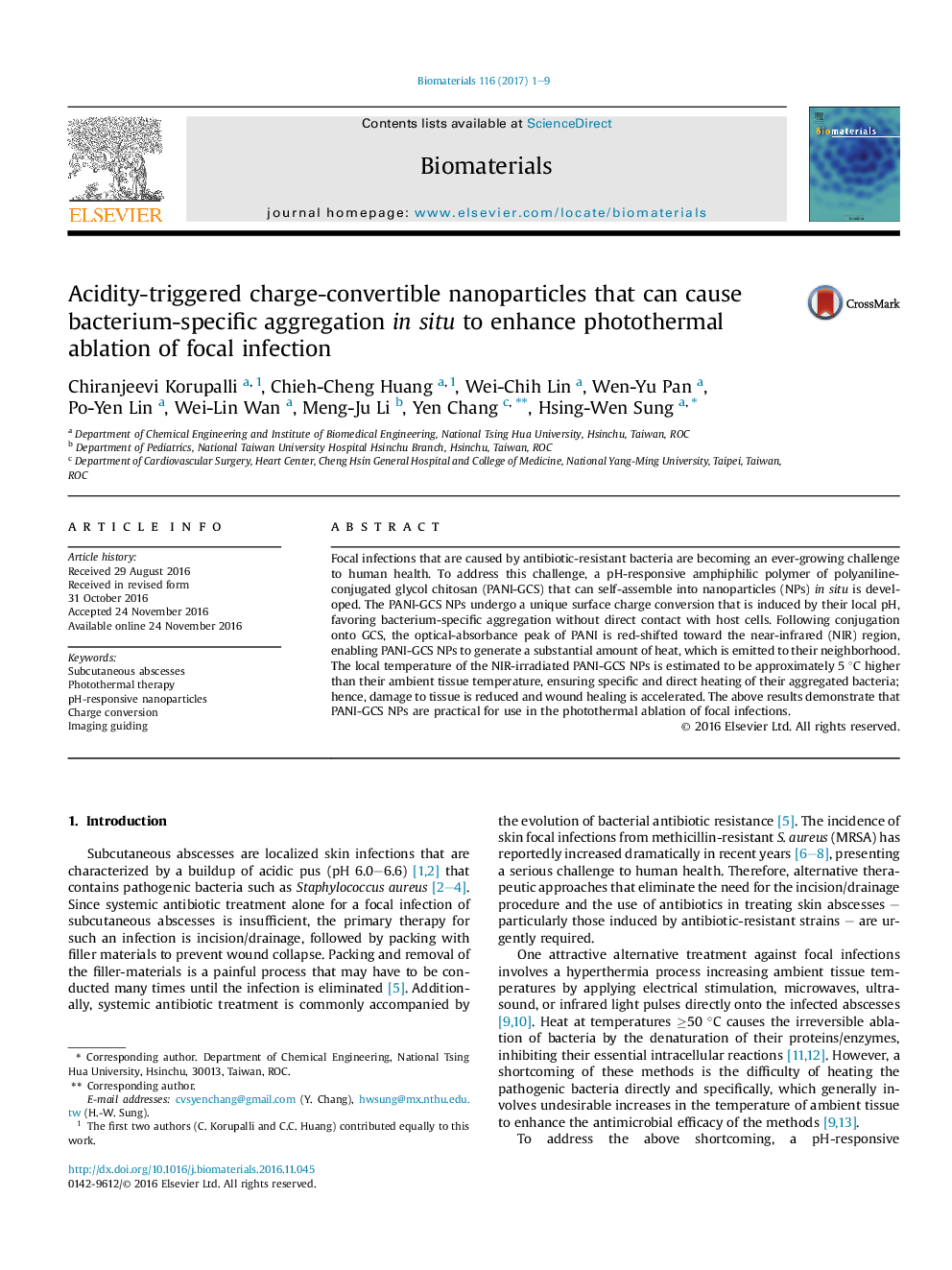| Article ID | Journal | Published Year | Pages | File Type |
|---|---|---|---|---|
| 6450892 | Biomaterials | 2017 | 9 Pages |
Focal infections that are caused by antibiotic-resistant bacteria are becoming an ever-growing challenge to human health. To address this challenge, a pH-responsive amphiphilic polymer of polyaniline-conjugated glycol chitosan (PANI-GCS) that can self-assemble into nanoparticles (NPs) in situ is developed. The PANI-GCS NPs undergo a unique surface charge conversion that is induced by their local pH, favoring bacterium-specific aggregation without direct contact with host cells. Following conjugation onto GCS, the optical-absorbance peak of PANI is red-shifted toward the near-infrared (NIR) region, enabling PANI-GCS NPs to generate a substantial amount of heat, which is emitted to their neighborhood. The local temperature of the NIR-irradiated PANI-GCS NPs is estimated to be approximately 5 °C higher than their ambient tissue temperature, ensuring specific and direct heating of their aggregated bacteria; hence, damage to tissue is reduced and wound healing is accelerated. The above results demonstrate that PANI-GCS NPs are practical for use in the photothermal ablation of focal infections.
